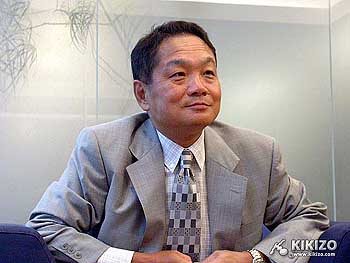Sony Partners with Nvidia for PS3
A departure for Sony, which has traditionally used its own GPU in PlayStation, as PS3 gets closer.
The PS2 successor moved one step closer to reality today as Sony announced joint development with Nvidia of a custom GPU for the next-generation platform.

This marks a big win for Nvidia, which is still reeling after being dropped by Microsoft earlier this year. The Xbox made use of a custom Nvidia GPU, but Microsoft chose instead to allow ATI to provide graphics capabilities for Xenon. Today's announcement also points at a major shift for Sony, which previously developed its own GPU for the PlayStation 2.
The new GPU will incorporate Nvidia's next-generation GeForce technology with Cell, Sony's much-touted PlayStation 3 CPU, to provide graphics for not only the PlayStation 3 but also other Sony products. This is a logical progression for Sony, which is already starting to put PlayStation 2 chips into televisions and other appliances.
 PS3, as shown in this artist's impression, will boast
PS3, as shown in this artist's impression, will boasta graphics processor from market leaders Nvidia.
Sony was keen to stress that the new GPU is going to be used in a networked environment, which feeds in well to the company's ongoing campaign of increasing dependence on broadband technology.
"In the future, the experience of computer entertainment systems and broadband-ready PCs will be fused together to generate and transfer multi-streams of rich content simultaneously. In this sense, we have found the best way to integrate the state-of-the-art technologies from Nvidia and SCEI," said SCEI boss Ken Kutaragi.
Besides the GPU, the other major component of the PlayStation 3 is the aforementioned Cell processor. This is another joint project, this time between Sony, IBM and Toshiba. Earlier this month, Sony announced that Cell production is about to get underway, with the first chips, destined for high-power developer workstations, to be ready during 2005.
All this new technology could be a handful to get acquainted with, though, which is why it's good news for developers that Sony and Nvidia are also jointly working on a number of middleware tools. These will help developers get to grips with the complex new hardware as quickly as possible, so that they can in turn get down to the business of making games.
Nvidia, for its part, is obviously keen on the new relationship - although it's not really all that new. It seems that Nvidia and Sony have quietly been working together on the PlayStation 3 GPU for two years already. And while no one knows exactly how the graphics are going to look, Nvidia president and CEO Jen-Hsun Huang assures as that, "the combination of the revolutionary Cell processor and Nvidia's graphics technologies will enable the creation of breathtaking imagery that will surprise and captivate consumers."
While there are currently few details outside of technical information for the next-generation PlayStation, the situation should be clarified at May's Electronic Entertainment Expo in Los Angeles, where Sony has confirmed the new hardware will be present in one form or another.
Meanwhile, Sony's competitors in the hardware market, Microsoft and Nintendo, are also working on their next-generation systems. Though Nintendo has been rather quiet with Revolution details, Microsoft could possibly show its cards as early as January, when Bill Gates delivers the keynote address at the Consumer Electronics Show in Las Vegas.
Learn more about the Cell processer here.
Alex Wollenschlaeger
Editor, Kikizo Games






 Satoru Iwata Video Interview - the late Nintendo president spoke with Kikizo in 2004 as 'Nintendo Revolution' loomed.
Satoru Iwata Video Interview - the late Nintendo president spoke with Kikizo in 2004 as 'Nintendo Revolution' loomed. Kaz Hirai Video Interview - the first of Kikizo's interviews with the man who went on to become global head of Sony.
Kaz Hirai Video Interview - the first of Kikizo's interviews with the man who went on to become global head of Sony. Ed Fries Video Interview - one of Xbox's founders discusses an epic journey from Excel to Xbox.
Ed Fries Video Interview - one of Xbox's founders discusses an epic journey from Excel to Xbox. Yu Suzuki, the Kikizo Interview - we spend time with one of gaming's most revered creators.
Yu Suzuki, the Kikizo Interview - we spend time with one of gaming's most revered creators. Tetris - The Making of an Icon: Alexey Pajitnov and Henk Rogers reveal the fascinating story behind Tetris
Tetris - The Making of an Icon: Alexey Pajitnov and Henk Rogers reveal the fascinating story behind Tetris Rare founders, Chris and Tim Stamper - their only interview? Genuinely 'rare' sit down with founders of the legendary studio.
Rare founders, Chris and Tim Stamper - their only interview? Genuinely 'rare' sit down with founders of the legendary studio. The History of First-Person Shooters - a retrospective, from Maze War to Modern Warfare
The History of First-Person Shooters - a retrospective, from Maze War to Modern Warfare